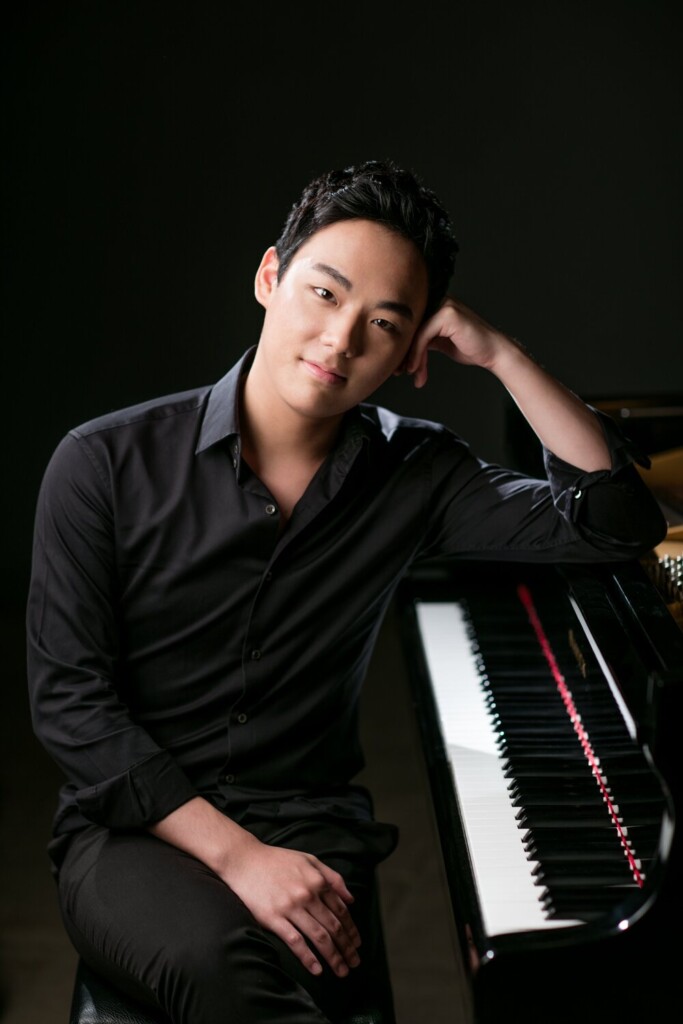It is a gold medal season for the Gina Bachauer International Piano Foundation’s concert series, which opens this week with Kuok-Wai Lio, the 2005 top prize winner of Bachauer’s Young Artists Competition, performing the final three piano sonatas which Franz Schubert composed near the end of his life.
The concert will take place Oct. 14 at 7 p.m. in the Jeanné Wagner Theatre in the Rose Wagner Center for Performing Arts. A reception will be held during the intermission.
This is Kuok-Wai’s first concert in Salt Lake City since he won the Bachauer competition 17 years ago. Now 33, the Macau native has performed as a soloist and chamber ensemble player, with appearances at venues such as Weill Recital Hall at Carnegie Hall, Tonhalle Zürich, and Herkulessaal in Munich.
The all-Schubert program is considered a masterful legend for international pianists. The composer completed the trio of piano sonatas just months before his death in 1828 at the age of 31. While Schubert worked in the shadows of Beethoven, who died in the previous year, he admired him and today the set of sonatas stands as equals to the final three Beethoven piano sonatas. But, the Schubert sonatas – Sonata in C Minor, D. 958, Sonata in A Major, D. 959 and Sonata in B-Flat Major, D. 960 – were forgotten for nearly a century until pianist Artur Schnabel played the set in 1928, placing them on the pianist’s radar for good. After Schubert died, his brother sold the manuscripts to Anton Diabelli, the Austrian music publisher but they were not made available until more than a decade after the composer died. The published manuscript was dedicated to Robert Schumann, who greatly admired Schiubert’s music.
In an interview with The Utah Review, Kuok-Wai says performing the piano part of the Winterreise song cycle, which Schubert composed in 1827, using the texts of 24 poems by Wilhelm Müller, allowed him to “make the leap in my understanding of Schubert.”
Kuok-Wai also says there is tonality cohesiveness in all three sonatas, which convinced him that they need to be played metaphorically in one breath. He also emphasizes that he does not see the conventionally romanticized picture of Schubert in his final months of his life as a tragic narrative. “In these sonatas, he’s always carrying on, and the journey is not finished and it certainly doesn’t end there,” he adds. Kuok-Wai sees an entire gamut of emotions but ultimately he also sees the works as symbols of redemption, with a meaning going much deeper than when the piano sonatas were finally returned to the pianist’s repertoire, starting with Schnabel’s performance.
“I believe in a deep personal resonance with the music for both performer and listener,” he says. “These works have an unspeakable quality, even more human, more personable and more approachable than Beethoven. It is a totally subjective experience which allows the music to speak freely and personally to each listener. And, one does not necessarily have to step into the shoes or minds of Schubert to understand what the music might mean.” Kuok-Wai adds, “For me, I have been truly drawn into it to make it a part of my life.”
The three sonatas shift, morph and extend continuously in their emotional landscapes. Rather than sad or forlorn, the works were not Schubert’s final message to the world. In their transcendence, they represent the complete break from the Classical Era but it also was Schubert’s genius that situates these works as more than a bridge to a new Romantic musical vocabulary of style, technique and expression, even while the works have Beethoven-like sensibilities.
But, Schubert also extrudes incredible amounts of emotional impact while ensuring the works are clearly organized. The sonatas do not overwhelm the listeners, and, in fact, the sonatas extensively use rests, fermatas and other dynamics to momentarily suspend time, an instinctive benefit for listeners to absorb the emotional soundscape Schubert has elegantly laid out on the page.
The first sonata of the set, the C Minor, is the strongest example of Schubert’s nod to Beethoven but the Allegro finale also will remind the listener of Schubert’s famous rendering of Goethe’s Erlkönig. The middle sonata, the A Major, is mainly pastoral, playful and nostalgic like Beethoven’s Sixth Symphony but the Andantino movement switches the mood to an ethereal eeriness. The final sonata, B Flat Major (incidentally the same key as Beethoven’s Piano Trio, Opus 97, which was dedicated to the Austrian Archduke Rudolph) is massive in its spaciousness. The opening Molto Moderato is as long as a complete Beethoven sonata. The entire sonata is the perfect closer for this concert – the holistic expression of optimism and emotional warmth.
The season will continue Nov. 14 with Andrey Gugnin, 2014 Bachauer gold medalist, in a concert featuring Rachmaninoff’s Preludes and Stravinsky’s Three Movements from Petrushka, a journey through some of Russia’s greatest musical masterpieces from the 20th century. In 2023, Changyong Shin, 2018 Bachauer gold medalist, who performed a Bachauer-sponsored Carnegie Hall concert last year, will perform March 10. His program will include sonatas by Mozart and Schubert as well as Liszt’s virtuosic take on Mozart’s Don Giovanni, including the famous aria Là ci darem la mano. The season will close April 30 with a concert by Olga Kern, the 2001 Cliburn Competition gold medalist.
For tickets and more information, see the Bachauer website.






2 thoughts on “Gina Bachauer International Piano Foundation’s gold medal season opens with Kuok-Wai, 2005 Bachauer Young Artists gold medalist, in all-Schubert program”